Copenhagen, reed exploitation
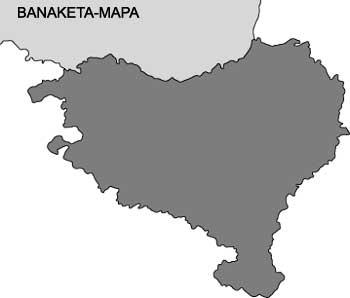
Around us are lakes, marshes and marshes, along with others, ecosystems with higher levels of production, so the density and diversity of living beings that inhabit them are also very remarkable. Birds, for their part, have reaped great success in these areas, where, in addition to the abundance of food, they can find hiding places and shelter to survive and nest. In addition, and due to the flight capacity of these vertebrates, they have no problems to move around the irrigated areas, which gives them a great advantage over other terrestrial vertebrates.
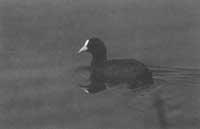
All this makes the marshes, lagoons and ponds a real paradise for birds, whose density and diversity of species can be very high. However, in order to avoid competition between them, the species have been highly specialized, notably consolidating their ecological niches. There are several species adapted to live in free waters. Another machine circulates through aquatic vegetation. However, a few have adapted to live on the borders between these two worlds, and it is an example of this co-pilot. And a curious example!
Copetazuria (Fulica atra) is a curious and recognizable bird, classified in the family of rashes. Its plumage is almost completely black and features outstanding white shields and peaks in the forehead area. On the other hand, its appearance is round and robust, since its fins are short for its size. Therefore, although the size of the front can reach between 35 and 40 cm in length and between 500 and 900 g in weight, its flight width is 70-75 cm. This makes it very difficult to take off the water, and you have to do great surface racing before reaching the takeoff speed.
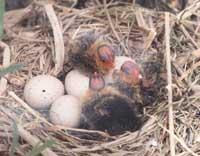
As already mentioned, the brotherhood is a border population between reeds and free waters, which can be seen both in its way of life and in its anatomical peculiarities. In fact, the brevity of its slopes, and therefore the difficulty of taking off, is characteristic of most birds able to dive into the subsoil. And as the brotherhood is rented by immersing it above all in submarine meadows located in the vicinity of the free waters, for what had long fins. On the other hand, copenhagen has fingers with membranous folds that help improve adaptation to the swim.
But if hazards are observed, the brotherhood seeks refuge hiding reeds and discover the tranquility and rest within the dense vegetation of the area. Thus, in addition to being adapted to swimming, the fingers of the copenhagen are usually long, suitable to move properly between the reeds and the branches of the surrounding bridges. And so, the copenhagen brings together the characteristics of free-water divers and specialized in living among plants, being able to survive on the borders of both worlds.
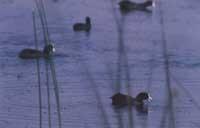
On the other hand, the co-pilot is a gregarious animal, but this trend is especially accentuated in winter. At that time the specimens that come from northern Europe as winterers join the inhabitants of the Basque Country. Despite the tendency to live in groups, the co-pilot is territorialist and the struggles between them are frequent. According to some authors, the hierarchy between these birds seems to be determined, among other things, by the size of the shield of the crown of the animal, which in some way would be indicative of the time of the bird.
However, it is common to see copetazurias in which the underwater plants spin together, which often causes the fight between two copetazurias. With the arrival of spring, and as it happens in most birds, also increases the territoriality of the focha, being the defense of the nest area the work of the male and the female, where you can also see couple fights.
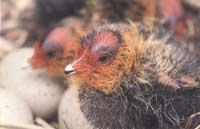
The breeding season begins in April, with the realization of two annual chitazos. The nest is a floating structure built inside the reed or linked to native trees or shrubs (formed by materials from reeds, aneas and other aquatic plants) and its preparation is the work of the male and the female. When the nest is ready, the female lays between 6 and 9 eggs for a week - one a day. These eggs are usually subelliptical, 50-55 mm long and 35-38 mm wide, light brown grey and painted dark brown or black. In any case, seals can be parasitic to species in the form of nest, and this irreverent bird can lay eggs in the nests of its companions before ending its nest.
The chiteo lasts from 22 to 25 days and this work is done by the two members of the couple. After this period, of course, nesting chickens are born, but for everyone to be born it takes two or three days. In any case, two or three days after birth, chickens are able to leave the nest, immediately starting to swim after adults. We can offer an incredible show, still almost bald, and dressed in necklaces and red plumes of the face and striking yellow, the efforts of these fun chickens that try to chase their parents as they can. However, once the nest is abandoned, the young people of Copenhagen will need two months before achieving their full independence, during which they will travel with their father or mother. At first it will be the parents who take the food to the peak, but the chites will learn what to eat and where to look for food. On the other hand, parents can also start another festival even though the kids are nearby.
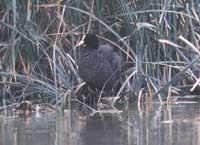
As for food, coquetazuria is mostly a phytophagous bird and usually of submarine grass plants (Poligonium amphibium, Greenland... ), feeds on new shoots on the banks of the reed or riverside vegetation. But like most plant feeding species, when spring comes, copenhagen also consumes animals to meet their calcium and protein needs. Therefore, in your diet fit a lot of invertebrates, amphibians, small fish, etc. other than plants. In addition, and as we have seen last spring, you can also exploit the eggs of other waterbirds, breaking the shell and eating inside. In fact, we could see that the brotherhood exploded three nests of the great carpenter (Podiceps cristatus), however surprising it was.
As said, the brotherhood is a typical species of wet means to survive, needing aquatic vegetation and reed. However, their needs are not excessively strict and, at least in the Basque Country, it is the bird that appears in most of the lakes and reservoirs of our territory, although these spaces are not very numerous. On the other hand, in the marshes of Muskiz there are several couples who also inhabit the stations of the Zadorra and Ebro rivers. The couples that reproduce in Euskal Herria, on the other hand, are sedentary, but as already mentioned, from autumn come to pass winter many units that come from the Nordic territories.
Technical information
SPECIES: Fulica atra Family: RASHES ORDER: GRUIFORMES CLASS: BIRDS |
Buletina
Bidali zure helbide elektronikoa eta jaso asteroko buletina zure sarrera-ontzian











